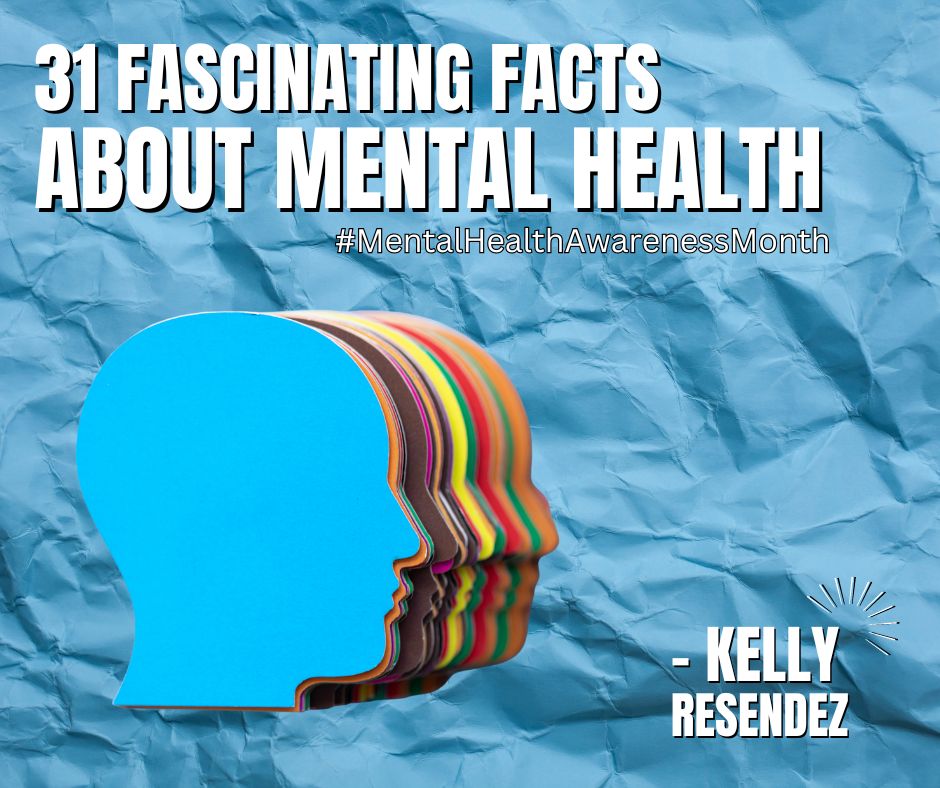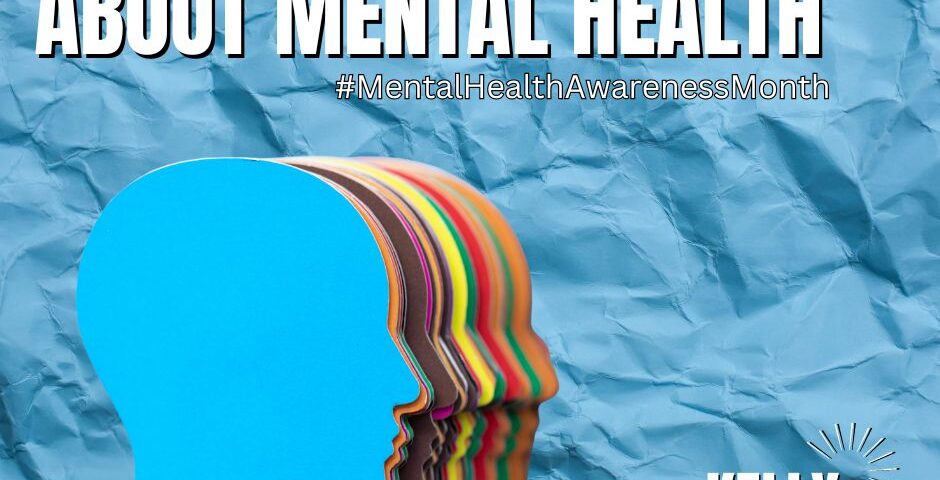
The Neuroscience of Narrative: The Power of Stories to Change Our Lives
April 23, 2024
Effective Communication Tips for Work, Relationships, and Every Day.
June 12, 2024
May is Mental Health Awareness Month, giving us the chance to promote awareness and acceptance of all things mental health and mental illness. That all starts with understanding and normalizing conversations around mental health, so I wanted to share these relevant facts for Mental Health Month.
31 Fascinating facts about mental health for May:
1. About 1 in 5 U.S. adults (20% of us) now live with a mental illness.
2. Anxiety disorders are the most common mental health disorders in the United States, affecting 18% of the total population annually, or 40 million adults.
3. Depression affects about 16.1 million American adults in any given year, about 6.7% of the U.S. population age 18 and older.
4. And it’s not just adults: 1 in 6 kids ages six to 17 in the U.S. experience a mental health disorder.
5. Women are 60% more likely than men to experience an anxiety disorder and twice as likely to be diagnosed with depression over their lifetime.
6. Around the world, the share of people who struggle with symptoms of anxiety or depression is now as high as 41%.
7. Utah has the highest prevalence of mental illness, followed by Oregon, West Virginia, Kansas, and Oklahoma, rounding out the top five states for reported mental health issues or treatment.
8. Suicide is the 10th leading cause of death in the United States, with over 45,000 Americans dying by suicide each year.
9. Tragically, suicide is now the second-leading cause of death among all U.S. children ages 10 to 14.
10. The rate of mental health disorders doubles for those who have been to war or lived through a major disaster.
11. Approximately 7-8% of the U.S. population will have PTSD at some point in their lives, with women being twice as likely as men to develop PTSD.
12. In the workforce, employees are now asking for greater mental health support. A report from the American Psychological Association discovered that 81% of employees consider mental health awareness and support a priority for future employers.
13. It should be a priority for employers, too, as serious mental illnesses cost our economy $193.2 billion in lost earnings each year.
14. Mental illness (along with substance abuse) is one of the top conditions that cause workplace disability, resulting in significant costs to families, employers, and publicly funded health systems.
15. Mental health disorders and substance abuse often interact. 37.9% of adults with substance use disorder also experienced a mental illness, and 20.3 million U.S. adults have a substance use disorder.
16. Only 41% of U.S. adults with a mental health condition received mental health treatment or services over the past year.
17. About 10.8% of all adults with mental illness are uninsured and have no medical coverage.
18. More than half of U.S. adults with a mental illness (55%) are not getting treatment for a variety of reasons, according to a recent study by Mental Health America, or 28 million adults. Even those with serious psychological distress (27% of those 28 million) are not getting treatment.
19. The top reported causes for not seeking or receiving mental health care include:
· 42% Said they cannot afford treatment.
· 27% Not knowing where to get help.
· 26% Believe they can treat the issue on their own.
· 19% Not having enough time to seek treatment.
· 17% Said their health insurance doesn’t pay enough for treatment.
20. More than 2 in 5 Americans say they don’t seek help for anxiety, depression, and other mental illnesses simply because they can’t afford the care they need.
21. But when people seek help and treatment for mental health disorders, a highly encouraging number (70-90%) experience a significant reduction in symptoms and improvement in their mental health.
22. Proper sleep is crucial for sound mental health, as sleep disturbances are strongly linked to mental health conditions.
23. Regular physical exercise also plays a big role in managing mental health, as studies show it significantly reduces symptoms of anxiety and depression.
24. Getting outside in nature has been proven to reduce the prevalence and severity of stress, anxiety, and depression.
25. Your beloved dog or cat can help improve your mental health! Research shows that pet ownership fosters better mental health outcomes, reducing stress, anxiety, depression, and loneliness.
26. Too much screen time – especially on mobile phones and devices – is a huge problem for young people especially. Studies show that high screen time correlates with much higher levels of anxiety, depression, decreased mental well-being, and mental illness among teens and youth.
27. Social media also breeds mental health conditions, especially among teenage girls. Studies show that high usage of social media increases feelings of anxiety, depression, isolation, and hopelessness.
28. There are many factors that can lead to mental illness, including genetics, physical illness or injury, and traumatic life experiences.
29. Mental illness doesn’t discriminate – it can affect anyone, no matter their age, race, religion, income, or how “normal” or “successful” they may appear from the outside.
30. Mental illness can emerge based on a complex and overlapping set of factors, including our genetic disposition, brain chemistry, personality, outlook, lifestyle, and trauma incurred.
31. There are plenty of positive, healthy habits you can undertake every day to improve your mental health and reduce anxiety, stress, and depression.
I outlined 12 ways to improve your daily health here.
Thanks for reading and sharing, and I hope you stay mentally healthy this May and all year long!



